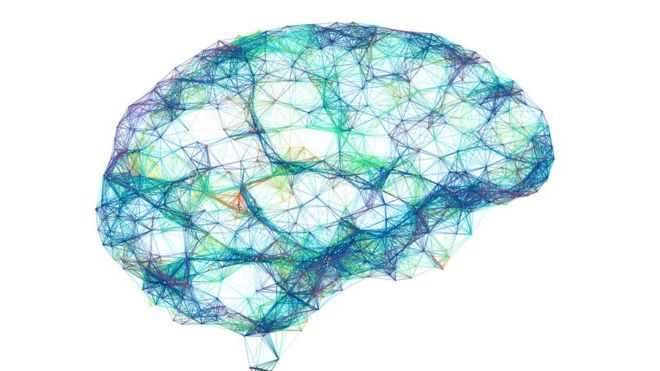

1. decode (v)
to discover the meaning of information given in a secret or complicated way
2. algorithms (n)
a set of mathematical instructions or rules that, especially if given to a computer, will help to calculate an answer to a problem
3. electrodes (n)
the point at which an electric current enters or leave something, for example, a battery
4. principle (n)
a basic idea or rule that explains or controls how something happens or works
5. interfaces (n)
a connection between two pieces of electronic equipment, or between a person and a computer
6. neural (adj)
involving a nerve or the system of nerves that includes the brain
Machine translates brainwaves into sentences

Scientists have taken a step forward in their ability to decode what a person is saying just by looking at their brain waves when they speak. They trained algorithms to transfer the brain patterns into sentences in real-time and with word error rates as low as 3%.
Previously, these so-called “brain-machine interfaces” have had limited success in decoding neural activity. The earlier efforts in this area were only able to decode fragments of spoken words or a small percentage of the words contained in particular phrases.
Machine learning specialist Dr Joseph Makin from the University of California, San Francisco (UCSF), US, and colleagues tried to improve the accuracy.
Four volunteers read sentences aloud while electrodes recorded their brain activity. The brain activity was fed into a computing system, which created a representation of regularly occurring features in that data.
These patterns are likely to be related to repeated features of speech such as vowels, consonants or commands to parts of the mouth. Another part of the system decoded this representation word-by-word to form sentences.
However, the authors freely admit the study’s caveats. For example, the speech to be decoded was limited to 30-50 sentences.
But they add that the decoder is not simply classifying sentences based on their structure. They know this because its performance was improved by adding sentences to the training set that were not used in the tests themselves.
The scientists say this proves that the machine interface is identifying single words, not just sentences. In principle, this means it could be possible to decode sentences never encountered in a training set.
When the computer system was trained on brain activity and speech from one person before training on another volunteer, decoding results improved, suggesting that the technique may be transferable across people.
Resource: https://www.bbc.com/news/science-environment

- How can we help people with communication problems?
- Would you learn English if there was real-time translation software?
- What is most difficult when speaking English?
- Do you think we will need more English teachers in the future?
“You can think of your life as being a little like knitting. When you first begin, there is no shape to it, but you keep knitting with some goal in mind—to make a sweater, a sock, or whatever. Every stitch is like a thought that you add to the overall shape of your life. Eventually, thoughts lead to action and the form will emerge, if you can only keep your intent in mind. If you have no clear vision, however, you will end up with a random pile of knotted yarn”
Ilchi Lee



